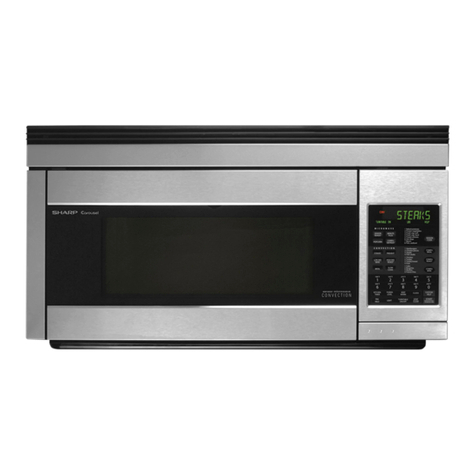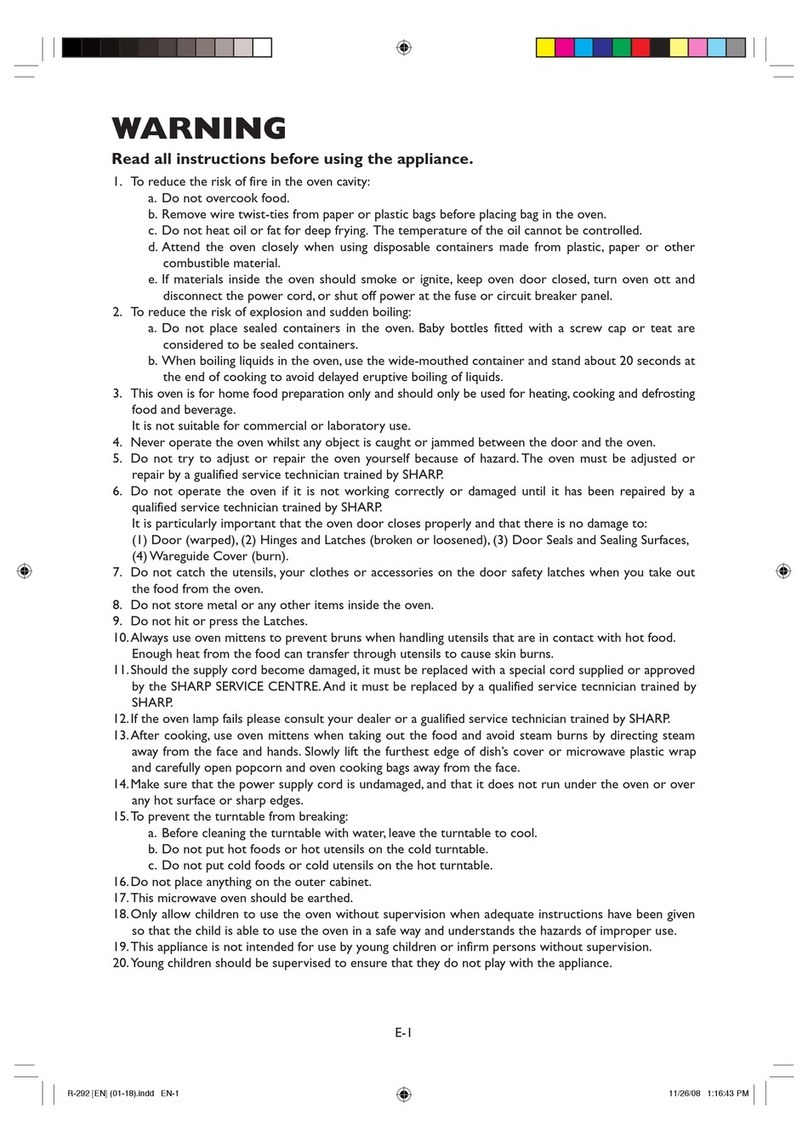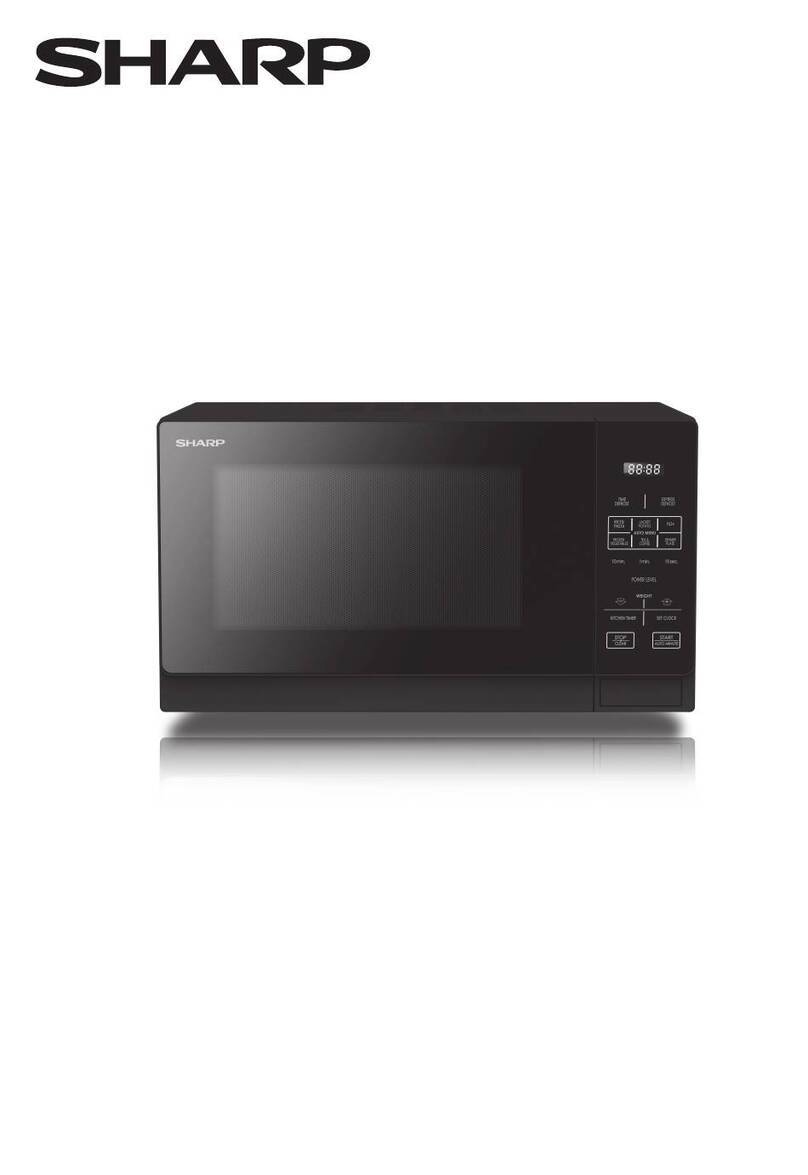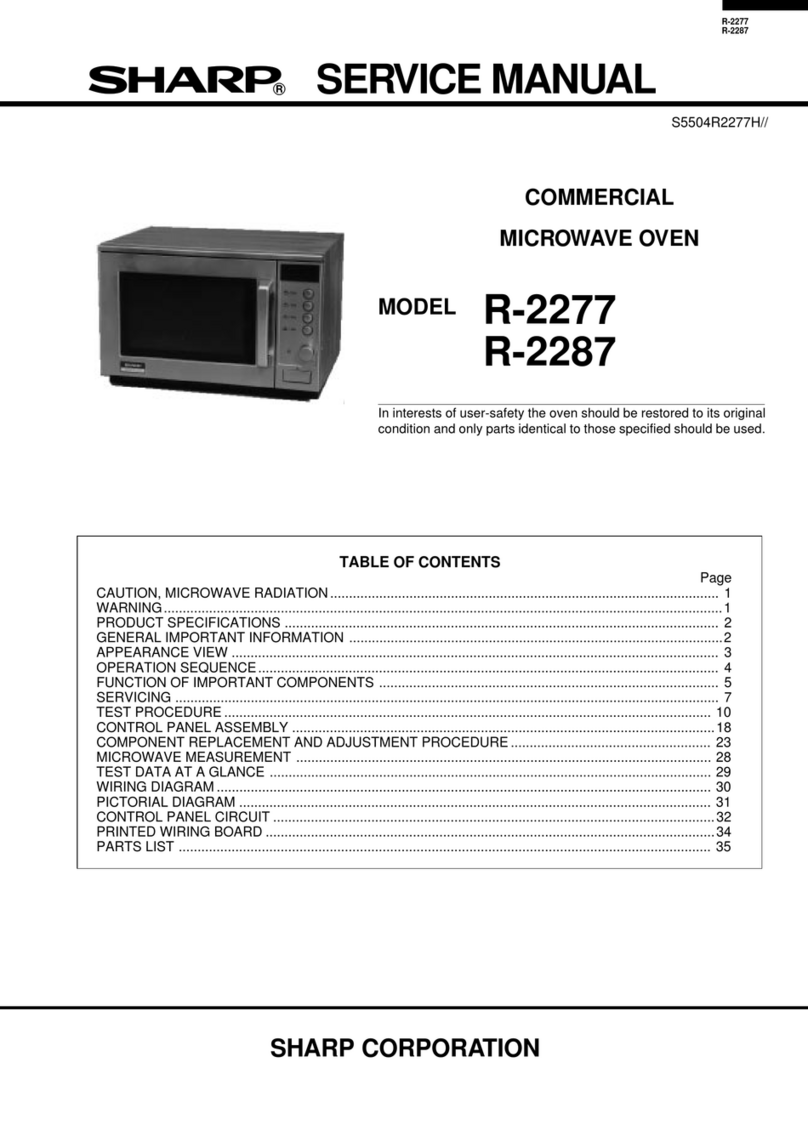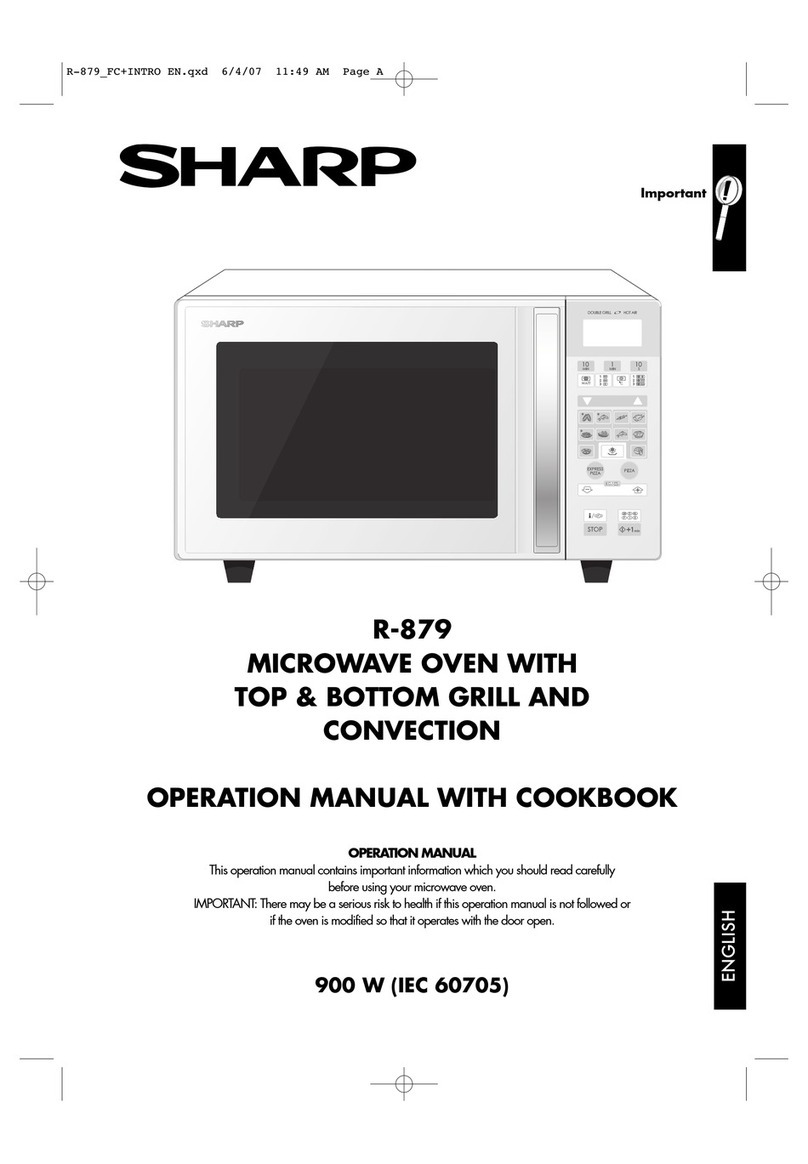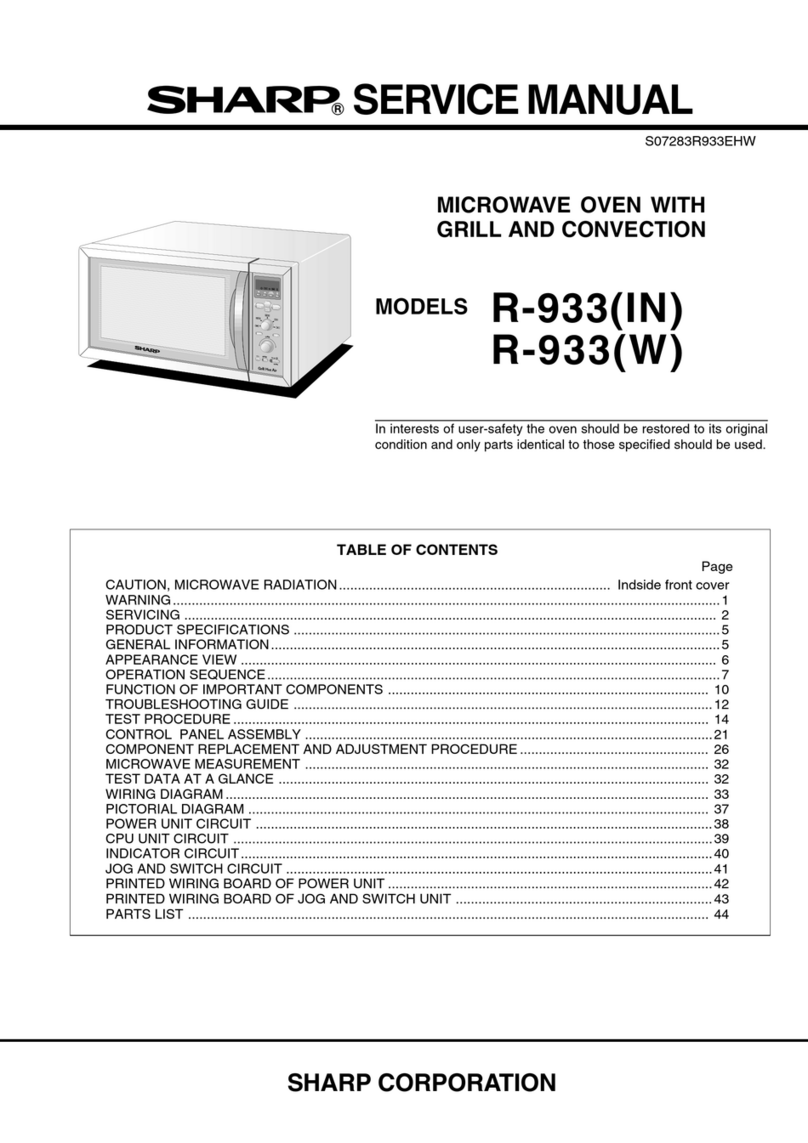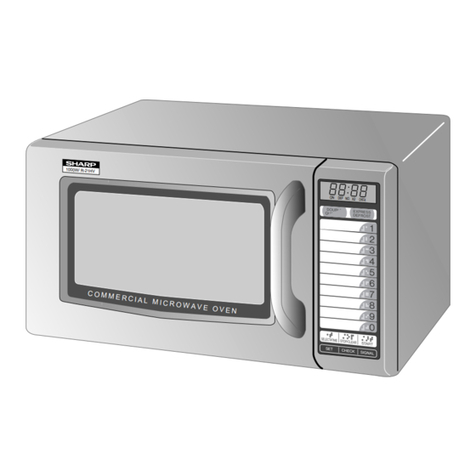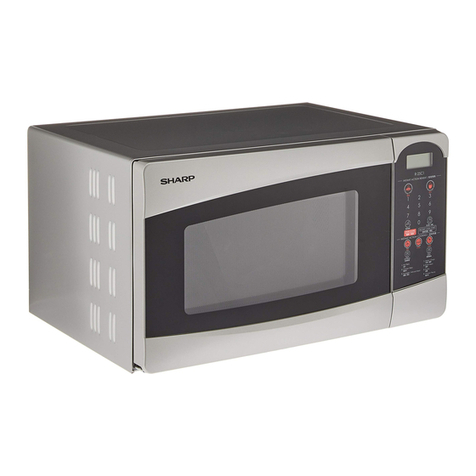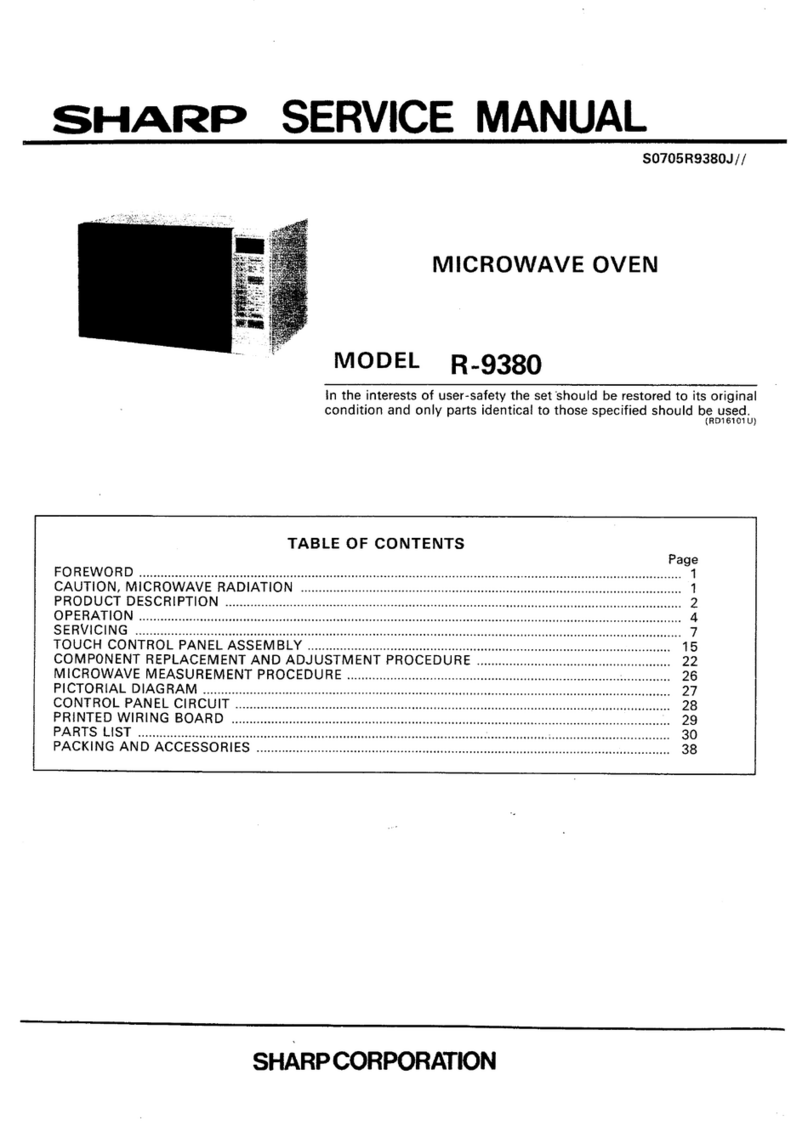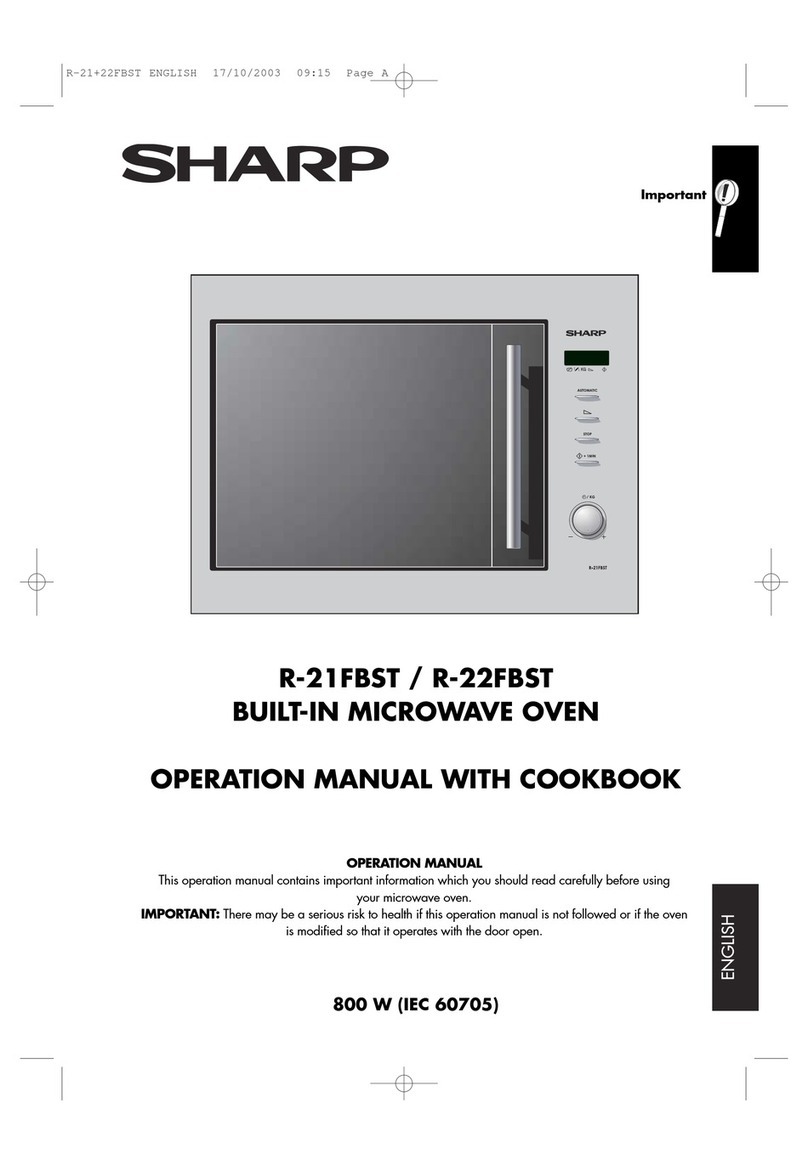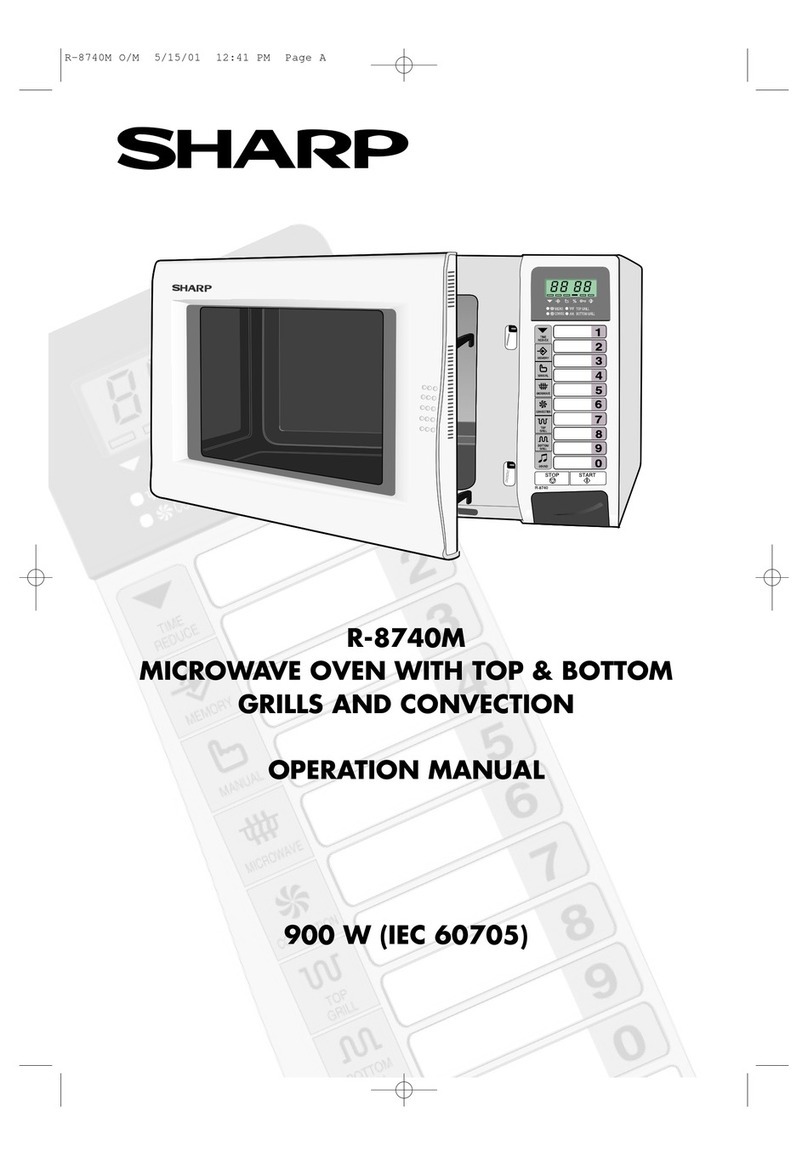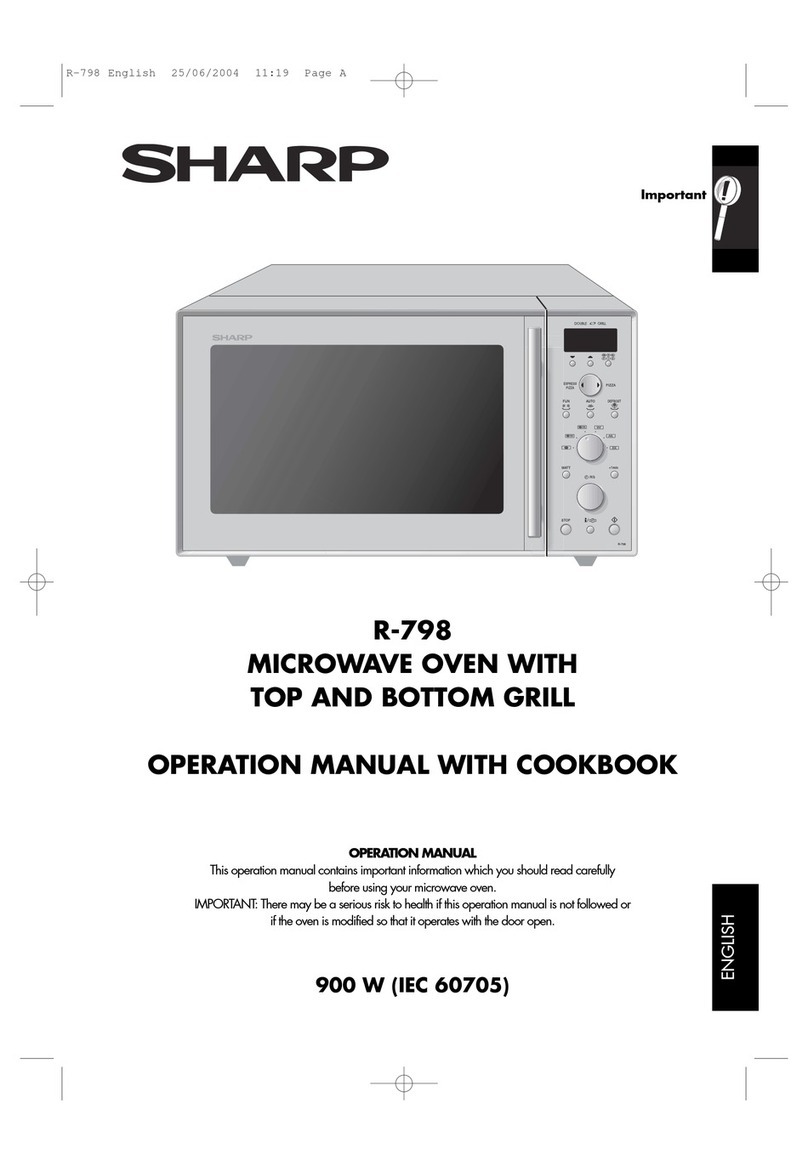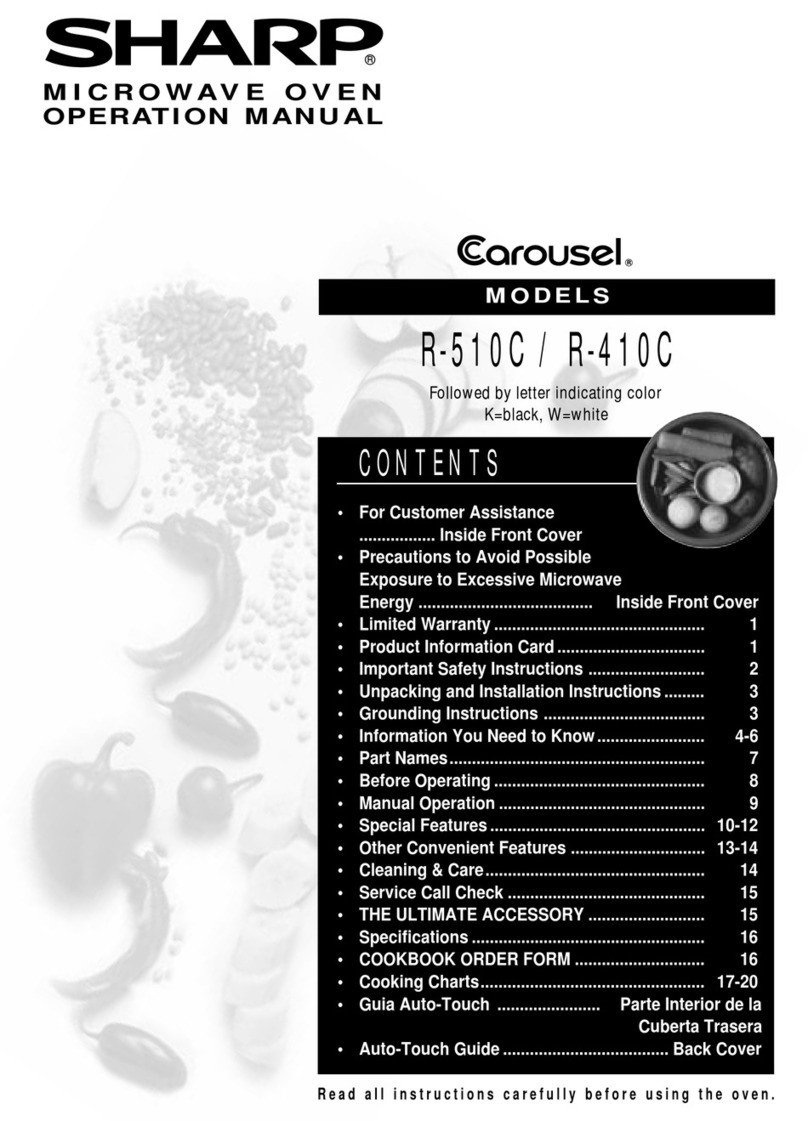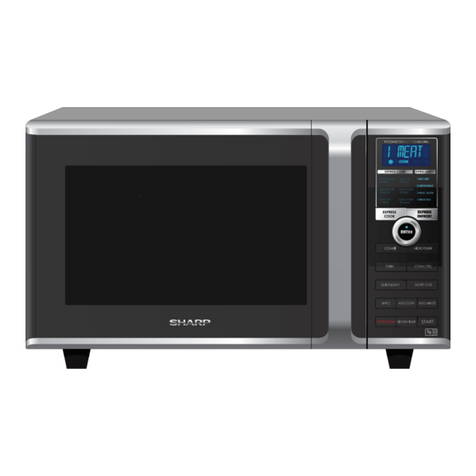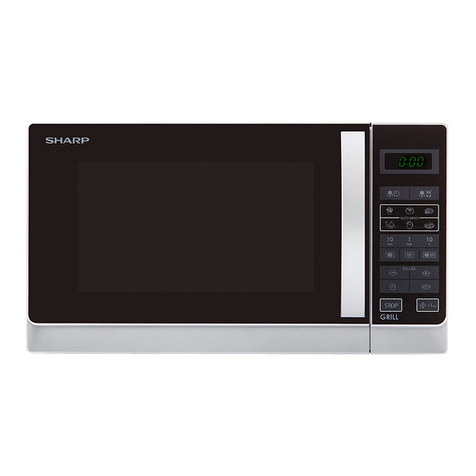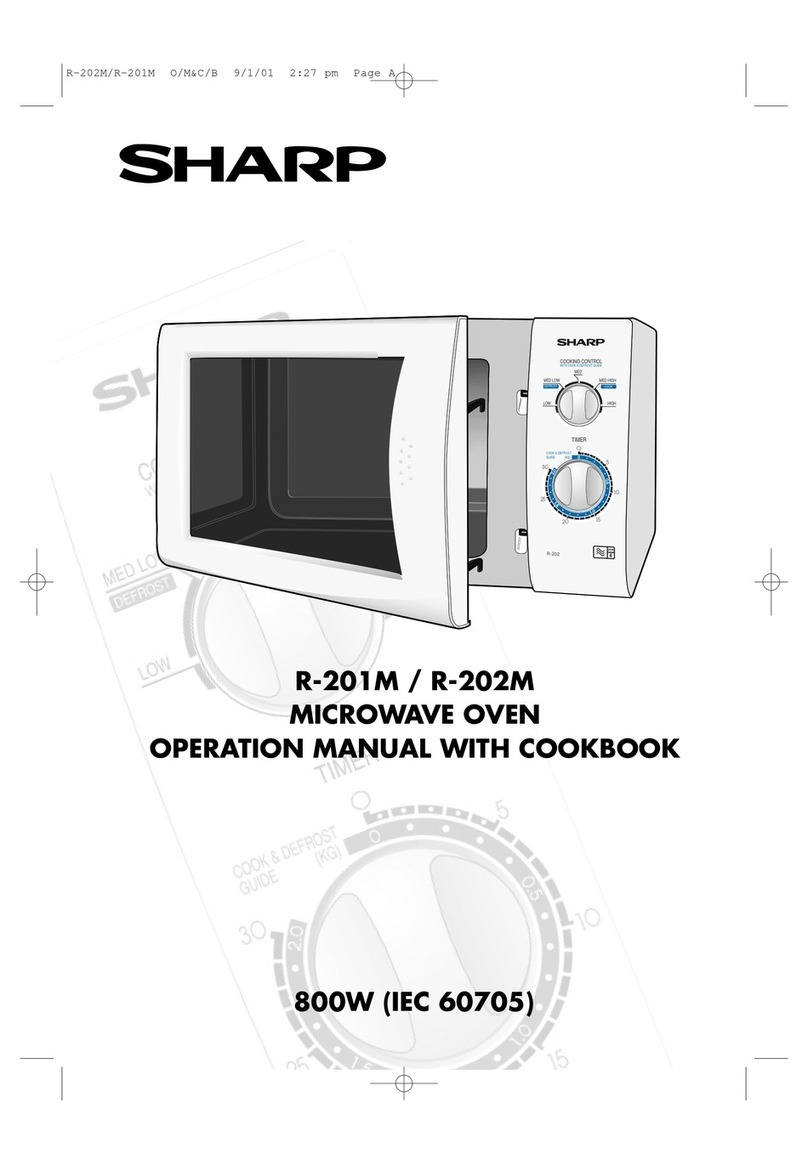R-4A56
5
FUNCTION OF IMPORTANT COMPONENTS
DOOR OPEN MECHANISM
Thedoorcanbeopenedbypushingthedooropenbuttonon
thecontrolpanel.Whenthedooropenbuttonispushed,the
latch lever is moved upward, operating the latch head. The
latch head is moved upward, and released from the latch
hook. Now, the door can be opened.
MONITOR
SWITCH
UPPER
LATCH
SWITCH
STOP
SWITCH
LOWER
LATCH
SWITCH
LATCH
LEVER PLUNGER
SWICTH
LATCH
HEAD
DOOR
OPEN
BUTTON
LATCH
HEAD
LATCH
HOOK
DOOR
Figure D-1. Door Open Mechanism
UPPER LATCH SWITCH, LOWER LATCH SWITCH
AND STOP SWITCH
1. Whenthe oven door is closed, the contacts (COM -NO)
must be closed.
2. Whentheovendoorisopened,thecontacts(COM-NO)
must be opened.
MONITOR SWITCH
1. When the oven door is closed, the contacts (COM- NC)
must be opened.
2. Whentheovendoorisopened,thecontacts(COM-NC)
must be closed.
3. If the oven door is opened and the contacts (COM- NO)
of the upper and lower latch switches fail to open, the
fuse(M8A)blowssimultaneouslywithclosingthecontacts
(COM-NC) of the monitor switch.
CAUTION: BEFOREREPLACINGABLOWNFUSE(M8A)
TEST THE UPPER AND LOWER LATCH
SWITCHES, MONITOR SWITCH AND MONI-
TORRESISTORFORPROPEROPERATION.
(REFERTOCHAPTER“TESTPROCEDURE”.)
MONITOR RESISTOR (0.8Ω20W)
Themonitorresistorpreventsthefuse(M8A)burstingwhen
the fuse blows due to the operation of the monitor switch.
ASYMMETRIC RECTIFIER
Theasymmetricrectifierisasolidstatedevicethatprevents
currentflow inboth directions. Andit preventsthe tempera-
tureriseofthepowertransformerbyblowingthefuse(M8A)
when the high voltage rectifier is shorted.
The rated peak reverse voltage of D1 of the asymmetric
rectifier is 6 KV The rated peak reverse voltage of D2 of the
asymmetricrectifieris1.7KV.D1andD2oftheasymmetric
rectifier or high voltage rectifier are shorted when the each
peak reverse voltage goes beyond the each rated peak
reverse voltage. (The process of blowing the fuse M8A.)
1. Thehighvoltagerectifierisshortedbyanycauseswhen
microwave cooking.
2. The peak reverse voltage of D2 of the rectifier goes
beyond the rated peak reverse voltage 1.7 KV in the
voltage doubler circuit.
3. D2 of the rectifier is shorted.
4. The large electric currents flow through the high voltage
winding of the power transformer.
5. The large electric currents beyond 8A flow through the
primary winding of the power transformer.
6. The fuse (M8A) blows by the large electric currents.
7. The power supply to the power transformer is cut off.
THERMAL CUT-OUT 145˚C (OVEN)
The thermal cut-out located on the top of the oven cavity is
designed to prevent damage to the oven if the foods in the
oven catch fire due to over heating produced by improper
setting of cook time or failure of control unit. Under normal
operation, the oven thermal cut-out remains closed. How-
ever, when abnormally high temperatures are reached
within the oven cavity, the oven thermal cut-out will open at
145˚C, causing the oven to shut down. The thermal cut-out
will be close its contacts again when its temperature goes
down lower than -20˚C.
FUSE (M8A)
1. If the wire harness or electrical components are short-
circuited, this fuse blows to prevent an electric shock or
fire hazard.
2. The fuse blows when the asymmetric rectifier, H.V.
rectifier,H.V.wireharness,H.V.capacitor,magnetronor
secondary winding of power transformer is shorted.
3. Thefusealsoblowswhenupperandlowerlatchswitches
remains closed with the oven door open and when the
monitor switch closes.
TEMPERATURE FUSE 150˚C (MG)
Thisfuseprotectsthemagnetronagainstoverheating.Ifthe
temperature goes up higher than 150˚C because the fan
motor is interrupted, the air inlet duct is blocked or the
ventilationopeningsareobstructed,thefuseblowsandputs
the oven out of operation.
The defective fuse must be replaced with new rated one.
D2 D1
ASYMMETRIC
RECTIFIER
HIGH VOLTAGE RECTIFIER
AB
C

